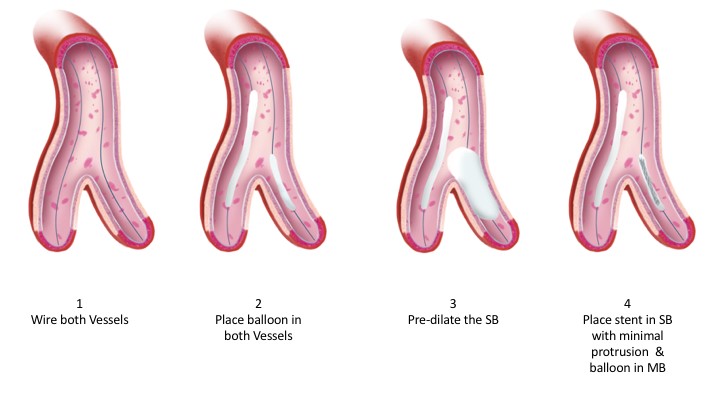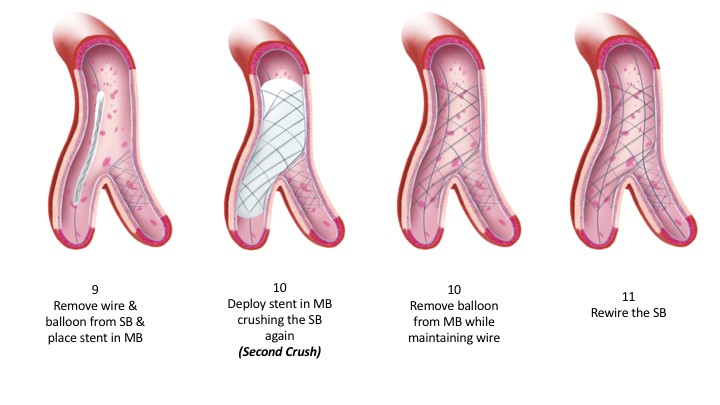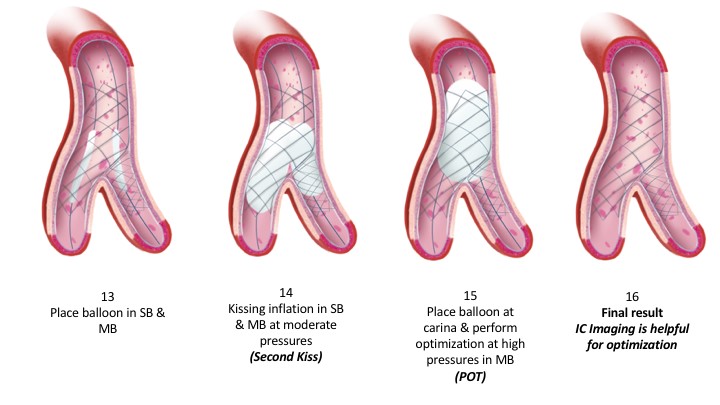To Stent or not to Stent?
In the wake of the ISCHEMIA trial results being published, and the media firestorm that ensued, I’ve run into some interesting scenarios, including STEMI patients saying they don’t want to be revascularized because they heard on the news that stents are useless (oh boy!). However, after a robust discussion with an intern, I decided to do a quick n dirty rundown of who does and does not need immediate revascularization, and which strategy to go with.
If there’s one thing you should know about the ISCHEMIA trial, it is that this study sought to answer the question of whether or not STABLE ischemic heart disease would benefit from an aggressive revascularization strategy vs a conservative strategy of goal-directed medical therapy. This had nothing to do with patients who had ACS. I will also add that with long-term followup, the results might change, nobody knows for certain. The reason I say this is because the PCI arm had a signal towards harm in the first 6 months after revascularization, but as they approached 4 years, the mortality curves started to separate in favor of the aggressive revascularization arm. As it stands, their conclusions were not in favor of an aggressive strategy over a conservative one. Interestingly, these results didn’t differ very much from the COURAGE trial, where they found no significant difference between optimal medical therapy vs PCI for stable ischemic heart disease. Differences to note include the fact that COURAGE did NOT use FFR, and did not have routine use of DES.
Keep in mind, patients with left main stenosis > 50% were excluded from both of these trials, as were those who had recent revascularization within the past 6 to 12 months (PCI or CABG). The reason I mention this is because some people thought these results contradicted the findings of the COMPLETE trials – but no, these trials looked at different sets of patients altogether!
A few big wins for the ISCHEMIA trial:
- CT-angiography was shown to be very reliable
- FFR-guided PCI is becoming more routinely accepted as the preferred method of PCI
- Optimal medical therapy really helps…even if there turns out to be a mortality benefit in favor of early-PCI, the fact that it takes several years to emerge is a statement about how helpful these medications truly are.
With regards to stable ischemic heart disease, clear indications for revascularization include left main stenosis > 50%, proximal LAD with >50% stenosis, or multi-vessel disease with signs of impaired ventricular function. Typically, cardiologists will employ the SYNTAX score, which is a validated system used to grade the severity and complexity of lesions. Typically, SYNTAX scores < 23 are amenable to PCI and non-inferior to CABG. The typical scenario for PCI is when you have isolated disease in only 1 or 2 vessels, and this is amenable to stenting.
Once you have significant left main disease, especially in conjunction with 2-3 vessel disease, the SYNTAX score is > 32, and CABG is superior.
Until very recently, it was generally accepted that isolated left main disease could be treated by PCI or CABG. However, some controversy has erupted recently after the results of the EXCEL trial were published. Specifically, the EXCEL trial had a composite endpoint of stroke, MI, or death, and there was no statistically significant differences between the two groups. Surgeons will tell you that the higher rates of the composite endpoint were driven by excess all-cause mortality in the PCI arm, as compared to peri-procedural MI in the CABG arm…in other words, while the composite endpoints were similar in both groups, the individual endpoint of mortality was higher with PCI, whereas peri-procedural MI was higher with CABG. This can certainly be a bit contentious, especially if you wonder what the clinical significance of a troponin elevation is after CABG. Nonetheless, the trial was powered to detect differences in the COMPOSITE endpoint, not in the individual endpoint of mortality.
The STICH trial demonstrated a significant benefit (albeit 10 years out) in favor of revascularization (this study only looked at CABG) for patients with ischemic heart failure. The FREEDOM trial took it one step further and tried to compare DES to CABG for mutli-vessel CAD in diabetics. The findings were strongly in favor of CABG over PCI, and this has become the accepted paradigm.
When you’re not sure, if they have funky looking anatomy AND they’re diabetic, you can make a safe gamble and ask your attending if they think this patient is a CABG candidate. 9 times out of 10, you’ll look like a genius.
In Conclusion:Stable ischemic heart disease has some controversy surrounding the role of revascularization, but ALL patients should be on optimal medical therapy
Patients with significantly reduced EF, Left main, proximal LAD disease, all should warrant a closer look at whether or not they would benefit from revascularization
Always try to involve a multi-disciplinary team when thinking about revascularization, at the end of the day, we are in the business of do no harm, so a second set of eyes can be beneficial.
The views, opinions and positions expressed within this blog are those of the author(s) alone and do not represent those of the American Heart Association. The accuracy, completeness and validity of any statements made within this article are not guaranteed. We accept no liability for any errors, omissions or representations. The copyright of this content belongs to the author and any liability with regards to infringement of intellectual property rights remains with them. The Early Career Voice blog is not intended to provide medical advice or treatment. Only your healthcare provider can provide that. The American Heart Association recommends that you consult your healthcare provider regarding your personal health matters. If you think you are having a heart attack, stroke or another emergency, please call 911 immediately.
References:
https://www.ischemiatrial.org/
Boden, W. E., O’rourke, R. A., Teo, K. K., Hartigan, P. M., Maron, D. J., Kostuk, W. J., … & Chaitman, B. R. (2007). Title LM, Gau G, Blaustein AS, Booth DC, Bates ER, Spertus JA, Berman DS, Mancini GB, Weintraub WS; COURAGE Trial Research Group. Optimal medical therapy with or without PCI for stable coronary disease. N Engl J Med, 356(15), 1503-16.
Campos, C. M., van Klaveren, D., Farooq, V., Simonton, C. A., Kappetein, A. P., Sabik III, J. F., … & Serruys, P. W. (2015). Long-term forecasting and comparison of mortality in the Evaluation of the Xience Everolimus Eluting Stent vs. Coronary Artery Bypass Surgery for Effectiveness of Left Main Revascularization (EXCEL) trial: prospective validation of the SYNTAX Score II. European heart journal, 36(20), 1231-1241.
Stone, G. W., Kappetein, A. P., Sabik, J. F., Pocock, S. J., Morice, M. C., Puskas, J., … & Banning, A. (2019). Five-year outcomes after PCI or CABG for left main coronary disease. New England Journal of Medicine, 381(19), 1820






